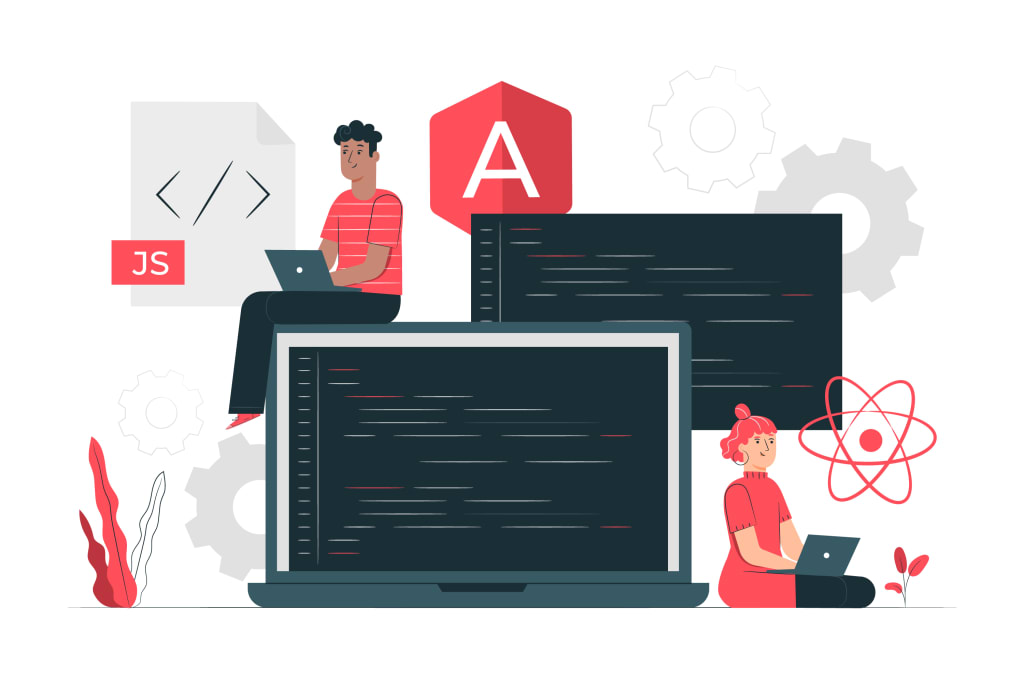Security Best Practices for Angular Applications
Security Best Practices for Angular Applications

In an age where data breaches and cyber-attacks are increasingly common, ensuring the security of web applications has never been more critical. Angular, a robust and popular framework for building web applications, provides various tools and practices to enhance security. This blog delves into the essential security best practices for Angular Web Development Services, drawing on statistics and studies to underline their importance.
1. Secure Development Lifecycle
Adopting a secure development lifecycle (SDLC) is foundational to building secure applications. A study by the Ponemon Institute found that organizations with a formal SDLC saw 75% fewer security breaches than those without one. Incorporating security at every phase of the development process—from planning and design to implementation, testing, and maintenance—helps mitigate vulnerabilities early.
Key Actions
- Conduct threat modeling during the design phase.
- Perform code reviews and security assessments regularly.
- Implement automated security testing in your CI/CD pipeline.
2. Use Angular’s Built-In Security Features
Angular provides built-in features to protect against common vulnerabilities such as Cross-Site Scripting (XSS) and Cross-Site Request Forgery (CSRF). Leveraging these features is crucial for maintaining a secure application.
Cross-Site Scripting (XSS) Protection
XSS attacks involve injecting malicious scripts into web pages viewed by other users. Angular’s default template syntax automatically escapes potentially unsafe content, significantly reducing the risk of XSS attacks.
Angular's output encoding helps prevent malicious scripts from executing.
Cross-Site Request Forgery (CSRF) Protection
CSRF attacks trick users into performing actions they didn't intend to perform. Angular includes CSRF protection mechanisms, such as the use of the HttpClient module, which can be configured to include CSRF tokens in HTTP requests.
3. Implement Strong Authentication and Authorization
Ensuring that only authorized users can access certain parts of your application is fundamental to security. According to the 2021 Data Breach Investigations Report by Verizon, 61% of breaches involved credential data. Thus, implementing robust authentication and authorization mechanisms is crucial for Web Design & Web Development Services.
Authentication
Use OAuth 2.0 and OpenID Connect for secure authentication. These protocols are widely adopted and provide a secure way to handle user authentication and authorization.
Authorization
Implement role-based access control (RBAC) to manage user permissions effectively. Define roles and permissions clearly and enforce them throughout the application.
4. Secure API Communication
Ensuring secure communication between your Angular application and backend APIs is vital. According to a report by Akamai, 83% of web traffic is now API traffic, making API security a top priority.
HTTPS
Always use HTTPS to encrypt data transmitted between the client and server. This prevents attackers from intercepting and tampering with data.
Secure API Endpoints
Ensure that your API endpoints are secure. Use token-based authentication, such as JWT (JSON Web Tokens), to authenticate API requests.
Input Validation
Validate all input data on both the client and server sides. This prevents malicious data from causing harm.
5. Protect Sensitive Data
Sensitive data such as user credentials, personal information, and payment details must be handled with utmost care to prevent data breaches.
Data Encryption
Encrypt sensitive data both at rest and in transit. Use strong encryption algorithms like AES-256.
Environment Variables
Store sensitive configuration data, such as API keys and database credentials, in environment variables rather than hardcoding them in your application.
6. Regularly Update Dependencies
Keeping Angular and its dependencies up to date is crucial to mitigate known vulnerabilities. The Snyk State of Open Source Security Report 2022 highlighted that 86% of open source vulnerabilities are found in indirect dependencies.
Automated Tools
Use tools like Dependabot or Renovate to automate dependency updates. Regularly review and apply security patches.
7. Implement Content Security Policy (CSP)
A Content Security Policy (CSP) is a powerful tool to mitigate XSS attacks. It defines which sources of content are allowed to be loaded by the browser.
Example CSP
Configure your web server to include a CSP header. This example restricts scripts to be loaded only from the same origin and trusted sources:
8. Logging & Monitoring
Effective logging and monitoring are crucial for detecting and responding to security incidents. The average time to identify and contain a data breach in 2021 was 287 days, according to IBM's Cost of a Data Breach Report. Prompt detection can significantly reduce this time and limit damage.
Best Practices
Implement comprehensive logging of user activities and security events.
Use monitoring tools to detect unusual patterns and potential breaches.
Regularly review and analyze logs to identify security issues.
9. Educate Your Team
Security is a collective responsibility. Educating your development team about security best practices is crucial for maintaining a secure application.
Training
Conduct regular security training sessions. Keep the team updated on the latest security threats and mitigation techniques.
Code Reviews
Incorporate security checks into code reviews. Ensure that all code follows security best practices before it is merged into the main codebase.
10. Regular Security Audits
Perform regular security audits to identify and fix vulnerabilities. Use automated tools and manual testing to ensure a thorough examination of your application’s security posture.
Penetration Testing
Conduct regular penetration tests to simulate real-world attacks and uncover vulnerabilities.
Automated Tools
Utilize security tools like OWASP ZAP, SonarQube, and others to perform static and dynamic analysis of your code.
Conclusion
Ensuring the security of your Angular applications requires a mobile applications development company to multifaceted approach, encompassing secure development practices, robust authentication and authorization mechanisms, secure communication, and ongoing monitoring and education. By following these best practices, you can significantly reduce the risk of security breaches and protect both your application and its users. Remember, security is not a one-time task but an ongoing process that must evolve with the ever-changing threat landscape.
About the Creator
Enjoyed the story? Support the Creator.
Subscribe for free to receive all their stories in your feed. You could also pledge your support or give them a one-off tip, letting them know you appreciate their work.





Comments
There are no comments for this story
Be the first to respond and start the conversation.